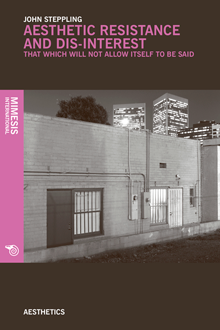
Jose Luis Cuevas, photography.
“First, at an ideological level, any movement away from social explanations, particularly wider economic and political ones, moved the debate away from looking for causes and solutions, particularly revolutionary political ones, in that area. Economic and political solutions, it could be argued, were not relevant where the problem is biological and individual weakness.{ } Second, the biological approach elevated the status of doctors and chemists as authorities and experts and undermined the standing of sociologists, psychologists, journalists and others with a more social and less individual approach. At the same time, doctors and chemists were just what the rising industrial power of Big Pharma, the major drug companies, needed to develop, test, trial and prescribe their drugs.”
Peadar O’Grady (Stop Making Sense, Alienation and Mental Health)
“The empire relies on its organs—popular media that includes but is not limited to print, broadcast, and online newspapers, the Hollywood entertainment industry, and generally the policies of the handful of companies that own all media in the world. These organs continually repeat discourses to incite fear, such as the use of chemical weapons. Control of discourses is crucial, which is why US policing apparatuses like the NSA must monitor, retrieve, and store all personalized electronic communication.”
Geoffrey Skoll (The Globalization of American Fear Culture)
“…according to one meta-analysis, you are seven times more likely than the general population to be diagnosed with schizophrenia if you are born from a deprived economic background, and four times more likely with regards non-schizotypal disorders.”
Peter Sedgewick (Psychopolitics)
“Americans have come to believe that science is capable of almost everything.”
Dr. Louis M. Orr (J. Young, The Medical Messiahs)
“…the meaning of fairy tales can only be fully grasped if the magic spell of commodity production is broken.”
Jack Zipes (Breaking the Magic Spell: Radical Theories of Folk and Fairy Tales)

Giuseppe Penone
It is increasingly important to breakdown and examine the elements of delusion and irrationality that seem ubiquitous today in the West. To do that, however, requires a clear picture or historical frame for how the U.S. became the global Imperialist power and how it sustains that role.
“The United States relied on local elites for day to-day control after military pacification had ended armed resistance. US companies used the Philippines to gain a commercial foothold in the western Pacific. The islands also provided a station for US naval forces. To the degree that pacification was needed shows that the Philippine War was a less successful imperial enterprise than US imperialism elsewhere, especially in its own hemisphere, where only occasional displays of force have been applied in Latin America to keep those countries in line. The Philippine War is understandable as the first model of the United States beginning to take over from Britain as the lead governmental administrator of world capitalism.”
Geoffrey Skoll (Ibid)
Today, discussion, especially on the left, seem to exhibit near total amnesia regards the employment of comprador assistance and native elites who are exhibited by mainstream (corporate, ruling class) media. Think of Syria, of the DPRK, or Iran. Think Venezuela and Bolivia and Brazil. If there are Syrian voices denouncing Assad, you can bet your pink slip that they are western educated and members of an affluent class.

Ziad Antar, photography (Mecca).
“In the Reich everything could be interrogated for its propaganda potential, every surface inscribed with polemical meaning, every building block of public consciousness from typeface and newsprint to the expression of military communiqués to the architecture to the very design and deployment of weapons themselves. Every medium carried the propaganda, not just art or film.”
Nicholas O’Shaughnessy (Selling Hitler, Propaganda and the Nazi Brand)
So much like the Nazis, the contemporary West (by which I mean the ruling class and its organs of mass communication) cannot create anything that is not propaganda, even if they tried. Not every surface is an advert, but most are, and even if some of this commodification or marketing is actually unintentional, the result is largely the same.
In Robert Whitaker’s book Anatomy of an Epidemic (mental illness) he sites a statistic …. for Schizophrenia the number of patients in 1955, in mental hospitals, was 28,482. In 1987 the number was 267,603. The same enormous leap in manic depressive cases. I want to return to this, but it is worth keeping in mind just how dramatic that leap in mental illness was. And Whitaker goes to pains to make clear it is not simply a matter of labeling or definition or access to treatment, because its not. Then of course from 1987 till today there is an even more dramatic increase in the numbers of mentally ill, and the numbers being treated with SSRI drugs or the like. These are pretty well known numbers.

Francesco Vezzoli
But before breaking those numbers down more I want to return to the ideas of propaganda and how they work.When Adam Curtis made Century of the Self, it created a good deal of discussion in educated circles. And that was fair, and it was a pretty singular piece of filmmaking, Today it doesn’t look or feel nearly as good. And his later work is paleo-conservative rubbish. But the point is that film made a good many people aware, or more aware of the concept of marketing. Of persuasion. And the real serious first wave of advertising employing Edward Bernays theories occurred after WW2. And on into the early and mid fifties. In other words, in a simplistic sense, the marked increase in mental illness diagnosis coincided with the rise in advertising and then marketing.
Geoffrey Skoll in his book (Globalization of American Fear Culture) notes (and quotes others observing the same thing) that 1968 (really 64 through 70) a significant turning point in western culture. In what C.Wright Mills called the cultural apparatus (Skoll quotes Mills). And I have written before not dissimilar things about the *sixties*. There was a conscious concerted counter revolution against that apparatus. It was the ruling class, essentially, redirecting ideology. But not just the ruling class, per se. There was already the built in tendencies of American history and capitalism, and a movement toward destroying unions and crushing dissent. The working class were already indoctrinated by the apparatus. After the Chicago 68 Democratic Convention there were polls taken that indicated nearly 60% of Americans approved of Mayor Daley’s handling of the protest. The police actions were approved, and validated. The backlash against the sixties social revolution was already in place.

Nixon and Elvis, Dec 1970.
“During the 1980s the Reagan administration oversaw three innovations in imperial control: counterinsurgency warfare; a shrinking national military with increased reliance on mercenaries and increased dependence on technology to replace military personnel; and application of a broad-spectrum public relations campaign to transform the cultural outlook of national populations. These three innovations developed at different rates, but by the twenty-first century they converged to form the main enforcement apparatus for the new empire.”
Geoffrey Skoll (ibid)
Among the top grossing films of the 1980s were Sixteen Candles, The Terminator, Die Hard, The Breakfast Club, Raiders of the Lost Ark and Ferris Bueller’s Day Off. If you look at the most popular films of the 1970s there is an evident shift. The 70s saw Apocalypse Now, The Godfather, Taxi Driver, The Deer Hunter, Rocky, Serpico, Five Easy Pieces, Three Days of the Condor, Annie Hall, Being There, and The Conversation. It may well be that the pivotal moment for Hollywood was the failure of William Friedkin’s Sorcerer (1977). Released the same week as Star Wars. The Friedkin film, a remake of Wages of Fear (Henri-Georges Clouzot, 1953) and its lack of box office signaled the end of studio willingness to back auteur projects. The George Lucas stamp bled into everything in the 80s.

Matthias Bitzer
The Friedkin film remains a singular achievement however, and an epitaph on serious work from Hollywood. It was much like Herzog’s Aguirre, The Wrath of God (1972) and Fitzcarraldo (1982). Perhaps what Friedkin lacked was a Klaus Kinski, but in any event the bloated budgets and tortured location filming, all in developing countries (all Latin American) suggests something additional, as well. These were the guilt films of European and North American imperialism.
The rise of neo-liberalism is worth a footnote of sorts here and Skoll devotes an entire chapter to it. The key element for the purposes of this post is that it formally introduced that Ayn Randian version of individualism into the bureaucratic and institutional sphere.
“An interesting aspect of neoliberalism is its connection with philosophical individualism (sometimes called methodological individualism). What makes the connection interesting is how this philosophy sustains scientific public relations and professional advertising. It is also linked to political and legal theories via the works of Gary S. Becker (1974) and Richard A. Posner (1981) who combine methodological individualism with marginal utility theory. What they all have in common is the positing of an abstract homo economicus as an eminently rational actor who makes decisions about how to spend money, what politics to support, and the degree to which s/he follows the law according to strictly rational calculations. Of course such people do not exist, but their importance lies not in their correspondence to reality, but to their atomism.”
Geoffrey Skoll (ibid)

Rafael Coronel
Neo liberalism, or neo-conservatism essentially ratify inequality as natural. It is also the purest expression of instrumental thinking. And that hyper rationality that not only influenced institutional thinking but infected western consciousness and the cultural apparatus. So, one relationship worth looking at is between this neo-conservative ideology and a cultural apparatus infused with, saturated with (by the 80s) marketing. The individualism of the Ayn Randian neo con and the individualism of the Puritan and frontiersman, and the individualism of the savvy consumer all merged.
The 80s saw the dramatic increase in diagnosis of mental illness. The Prozac generation was sitting down to watch Ferris Bueller’s Day Off or The Terminator, and trusting in the Reagan dream. The individualism of the consumer. An individualism that carries with it the residue of the frontiersman and the Randian selfish businessman (business man of action).

Henry Kissinger and Shah of Iran, Zurich Hotel.
The 80s was also the escalation of the war on drugs. And a globalization of that war and a refinement of the propaganda terminology (the appearance of “narcoterrorism”).
“That is, the new fascism is not confined to a few centers of capital, as it was in post–First World War Europe, but to the entire world system. It is this world systemic fascism that the globalization of fear culture supports and represents in symbolic form.”
Geoffrey Skoll (ibid)
A quick survey of 80s TV shows reinforces that sense of a shift: Dallas, The A-Team, Cagney & Lacey, The Cosby Show, Who’s the Boss, The Wonder Years, Family Ties, Cheers, and Magnum P.I. There is a profoundly reactionary core to all of this stuff. Much of that reaction traffics in a nostalgia for fantasy landscapes of the American dream. It also marks the beginning of a pronounced growth of infantalism. And the signal event that gave birth to this was the fall of the Soviet Union. It is interesting how the U.S.S.R. worked as a defense against a wholesale unregulated violence of capitalism, but also against the intensification of racism and xenophobia seen since that time. The fall of the U.S.S.R. also opened the flood gates to the new infantilism. It was the fall of seriousness in a sense.

Aguirre, The Wrath of God (Werner Herzog dr. With Klaus Kinski). 1972.
But not to get ahead of myself here. The Hollywood product of the 80s was the real watershed for the cultural apparatus. The best films out of Hollywood in the preceding twenty years were now impossible to get made (think Boreman’s Point Blank, Penn’s Nightmoves, Karel Reisz’s Who’ll Stop the Rain). It is worth noting that in American TV the counter-revolution was underway already in the 1960s. The half hour dramas of the 1950s (some of them taped live) were replaced with network kitsch. Film caught up with this counterrevolution in the 80s. And the post modernist theory went along in subtle ways (and sometimes obvious ways) to reinforce this and to validate a camp aesthetic that overvalued junk, an exaggerated appreciation of the bad.

Tomma Abts
The problem with much of the anti-post modern critics is that they end up both exhibiting a tacit anti-intellectualism and a deep strain of conservatism. It is why Adorno and Horkheimer’s Dialectic of Enlightenment remains so useful and important. It is also problematic that while Foucault was indeed, in the end, reactionary, he was also often not, and often very insightful. Baudrillard was mostly rather good, I think. But what haunts all of them in a sense is the spectre of Nietzsche and even more that of Heidegger.
The additional problem is that the critics of post modernism are almost unfailingly ignorant of Marxism. There is never a class analysis to their complaints about post modernism. Helen Pluckrose wrote a much circulated piece at Aero that derides Edward Said’s Orientalism and then quotes Andrew Sullivan. Pluckrose is a moron, essentially. Maybe we should leave it at that. But the important and relevant factor here is that the CIA was clocking and following French theory and saw it as a way (correctly or not) to get students to stop reading Marx and Gramsci, and hence to stop thinking in terms of revolution. To stop thinking in anti Imperialist ways. But much like the exaggerated CIA attempt to co-opt Abstract Expressionism (which I have written about twice on this blog)
http://john-steppling.com/2014/04/revisiting-the-new-york-school/
http://john-steppling.com/2018/05/the-dying-light/

Esther Bubley, photography. (Greyhound Bus Station, 1940s).
This didn’t necessarily invalidate the work. It certainly didn’t with Ab-Ex. But it no doubt had an effect. I suspect there were a whole array of other factors that contributed to the popularity of post modern French thought. Students were already not reading Marx, and in fact were already not reading — not as they had twenty years earlier. But French theory can also be set against this backdrop of counterrevolution in the apparatus. It was both effected by it and part of it. The influence of Heidegger was unquestionably pernicious.
Gabrial Rockhill wrote about this (the CIA and French theory), too, at the LA Review of Books (which might suggest the first problem) and it contains some useful info on the cultural encouragement given to anti Soviet interest and by extension anti Marxist thought by what undercover operatives were about. However one tweezes this apart the effect of the worst of Post Modernism was only part of a general propaganda effort to demonize socialism (something that had gone on for forty years already) and stigmatize dissent overall. The problem again is that most of the criticisms of French Theory is itself either reactionary or just bad and ill informed. And the reflexive embrace (uncritical embrace) of science (and again by extension instrumental thought and positivism) is unfortunate but blends seamlessly with the ascension of the unserious and the applause and valorizing of kitsch and camp. To explain this, at least in a short hand manner here, requires a quick trip back to the German Positivist dispute of the 1960s. One cannot give it too short a treatment however, for that is the problem itself — the tendency to short coded equations or formula. But the Karl Popper side of the dispute is, in a sense, the precursor for a kind of neutralizing rationality in later politics. The lesser evilism of the Democratic Party liberal is directly connected to Popper and to ‘critical rationalism’ (in opposition to Adorno and the Frankfurt School and critical theory). But that lesser evilism is also connected to the psychology of adjustment (and resentment) that fuels the personality disorders of advanced capitalism. The notion of maturity is one that is guarded and reactive, it is unyielding (in a Reichian sense) and it is anal sadistic in extreme cases. The clear political expression of the positivist rationale is that of incremental reformoism. Popper himself was not really a positivist (he certainly denied being one) but his position was one closely tied into instrumental thinking, and was at pains throughout his life to conflate fascism and communism.

Eko Nugroho, installation, various media.
“The French social sciences we are familiar with now were thus a postwar invention, and in all aspects of French modernization after the war their ascendency bore some relation to U.S. economic intervention. To a certain extent the turn to this kind of study was funded and facilitated by the United States in a kind of Marshall Plan for intellectuals. A review of the literature makes a convincing case that the foremost American export of the period was not Coca-Cola or movies but the supremacy of the social sciences. { } A grant from the Rockefeller Foundation in 1947 helped finance the founding of the VI section of the Ecole pratique des hautes etudes under the directorship of historian Lucien Febvre, who had seized the initiative from a rival group of sociologists headed by Georges Gurvitch. Home to Fransois Furet in the early 1960s, this institution would be central to the future of the social sciences in France: in 1962, when Febve’s successor Fernand Braudel gathered all the various research laboratories scattered around the Latin Quarter and housed them in a single building on the Boulevard Raspaid, the Maison des sciences de l‘homme, the Ford Foundation helped finance the operation.”
Kristin Ross (Fast Cars, Clean Bodies: Decolonization and the Reordering of French Culture)

Torkwase Dyson
Without belabouring this point, one needs to note that Ross herself is part of the counterrevolution — is a part of the anti-communist agenda launched directly after WW2. It is subtle, in a sense, but her critique is by clear implication anti-Marxist and anti-communist. Michael Barker wrote a piece at Counterpunch that touches on something perhaps even more to the point here. Discussing John Krige’s book American Hegemony and the Postwar Reconstruction of Science in Europe and the role of the Rockefeller Foundation in shaping post war French thought and science…
“…and the foundation were not simply interested in supporting good science and new directions in France. They wanted to use their financial leverage to steer French scientists along quite definite lines. Weaver in particular believed that the French were parochial and inward-looking. He wanted to transform them into outward-looking, “international” researchers, using techniques and tackling questions that were current above all in the United States. It was a vision inspired by the conviction that, without a radical remodeling of the French scientific community on American lines and the determined marginalization of Communist scientists in the field of biology, the country could never hope to play again a major role in the advancement of science.”
John Krige (ibid) { quoted by Michael Barker, Counterpunch 2017}

Jane Alexander
What seems more important here is that the Ford Foundation and the Rockefeller Foundation very consciously worked to undermine any working class unity, both nationally and internationally. It also marked the beginning of ruling class purchases of media. And the consequent erasure of leftist voices in that same media. The apparatus was being intentionally shaped to discredit communism and the working class itself.
It is important to note the co-opting of French science. I say this because of the direction taken by the climate discourse today. There is a countless appeal to the authority of “science”. The idea that somehow, in this landscape created by the apparatus, science exists in a pure clear plastic bubble that is unaffected by the events of the world around it. Science is never simply science. And the positivist debate in Germany in the 60s is, at least symbolically, a pivotal moment in the critique of society — the defining of the word “society” and the (then) growing mystification of class, technology, and those loaded words “democracy” and “freedom”. The Frankfurt School critique of the Enlightenment, and especially in their critique of the Odyssey, remains stunningly relevant today.
One could spend some time untying the various and myriad knots of influence in philosophy that would give birth to an Agamben (Italian), who is close to fascist once one looks more closely. Or to publications such as Jacobin that are the step children of Rockefeller Foundation influence, or the Grand Mufti of post modern fascist thought, Slavoj Zizek. And the manufactured culture wars and media hype that give us the preposterous figure of a Jordan Peterson. Such things are not accidental. Nobody who suddenly appears in mainstream media, which is ruling class media, is there by accident. Nobody is there who is not vetted, as it were. Just as nobody becomes a well funded Presidential candidate without vetting, or becomes Pope.

Audrey Casalis
But back to life under the sign of the apparatus.
“Phenothiazines had first been synthesized in 1883 for use as chemical dyes, and Rhône-Poulenc’s scientists were trying to synthesize phenothiazines that were toxic to the microbes that caused malaria, African sleeping sickness, and worm-borne illnesses. Although that research didn’t pan out, they did discover in 1946 that one of their phenothiazines, promethazine, had antihistaminic properties, which suggested it “might have use in surgery. The body releases histamine in response to wounds, allergies, and a range of other conditions, and if this histaminic response is too strong, it can lead to a precipitous drop in blood pressure, which at the time occasionally proved fatal to surgical patients. In 1949, a thirty-five-year-old surgeon in the French Navy, Henri Laborit, gave promethazine to several of his patients at the Maritime Hospital at Bizerte in Tunisia, and he discovered that in addition to its antihistaminic properties, it induced a “euphoric quietude…. Patients are calm and somnolent, with a relaxed and detached expression.”
Robert Whitaker (ibid)
This marked the birth of today’s chemical warehousing. What the surgeon discovered subsequently was that promethazine disconnected different parts of the brain from each other. It also partially inhibited memory, and most importantly, the patient felt no anxiety. The patient was tranquil, slightly dim and slow to respond, but mostly content. Viola!! The potential was immediately apparent. One doctor at the time described it as a medicinal lobotomy. Clearly it would inhibit a good deal of mobilization, initiative, and impulses to organize. In a sense it was the indifference drug.

Reagan and Donald Trump, 1987.
I have written before, several times in fact, on the evolution of psychoanalysis and psychiatry once they crossed the Atlantic to the U.S. That psychiatry saw potential in Thorazine and soon after a host of other related drugs, is telling. This might, they thought, be useful for depressive patients. But think on that a moment. The very idea of a cure for depression is diabolical, and is something that might only make sense in the shadow of the apparatus.
Whitaker’s chapter on the history of schizophrenia is particularly good, and it is useful today because of the role eugenics played. That eugenics has never left the contemporary Imperialist mind set has to be pretty obvious by now, but the story of pharmacological treatment of mental “illness” is something from which it cannot be separated.
“According to the conventional wisdom, it was Thorazine that made it possible for people with schizophrenia to live in the community. But what we find is that the majority of people admitted for a first episode of schizophrenia during the late 1940s and early 1950s recovered to the point that within the first twelve months, they could return to the community. By the end of three years, that was true for 75 percent of the patients. Only a small percentage—20 percent or so—needed to be continuously hospitalized. Moreover, those returning to the community weren’t living in shelters and group homes, as facilities of that sort didn’t yet exist. They were not receiving federal disability payments, as the SSI and SSDI programs had yet to be established. Those discharged from hospitals were mostly returning to their families, and judging by the social recovery data, many were working. All in all, there was reason for people diagnosed with schizophrenia during that postwar period to be optimistic that they could get better and function fairly well in the community. It is also important to note that the arrival of Thorazine did not improve discharge rates in the 1950s for people[…]“get better and function fairly well in the community. It is also important to note that the arrival of Thorazine did not improve discharge rates in the 1950s for people newly diagnosed with schizophrenia, nor did its arrival trigger the release of chronic patients. { } “The discharge of chronic schizophrenia patients from state mental hospitals—and thus the beginning of deinstitutionalization—got under way in 1965 with the enactment of Medicare and Medicaid. In 1955, there were 267,000 schizophrenia patients in state and county mental hospitals, and eight years later, this number had barely budged. There were still 253,000 schizophrenics residing in the hospitals.9 But then the economics of caring for the mentally ill changed”
Robert Whitaker (ibid)
There was money to be made by keeping people sick, and keeping them in hospitals. That’s the short version but it pretty well sums things up. And this is to not even mention that defining schizophrenia is perhaps impossible.

Florian Pumhösl
So how do all these threads connect. Fascism, Imperialism, the anti communist ruling class reshaping of western culture and mental health and mental illness? I want to suggest that the shift seen in popular entertainment, mostly from Hollywood, is actually a sort of key to reading the apparatus.
“Judged overall, however, the current expansion of private therapeutic practices, although often framed within a non-medical or even anti-medical rationale, amounts to a trend very similar to that contained in privatised, fee-for-service medicine itself; it funnels money, skills and careers away from the severe and the chronic personal problems of the lower socio-economic orders (who cannot foot the bill or speak the language of the more affluent private sector) and into the less chronic, less severe but financially rewarding and culturally voguish difficulties of the well-heeled.”
Peter Sedgwick (ibid)
The shift in entertainment narratives to stuff like Sixteen Candles ushered in the post modern Rockwellian kitsch ethos. It was infantile, intentionally so, trivial and sentimental. It was also broadly applauded and reviews were almost unanimously positive. The flip side of this was The Terminator. Equally childish but more narrowly targeting a specific audience; young white (mostly) males. It got a good deal of white feminist (mainstream version) affirmation because of the ‘bad ass’ Linda Hamilton, but overall it was another cartoon, but one in which a great deal of money was spent. Unlike Sorcerer or Fitzcarraldo, this was studio product. Cameron is the anti-auteur. It was paint by the numbers calculation. But the point here is that the 80s saw the front wave, in diluted form, of the later and far more acute jingoism of the 2000s. Today there is almost not a single TV drama (sic) that is not overtly an advertisement for the military. But not only that. It’s something else, something more complex and illusive. The military advert aspect is even weirder than earlier versions of the same. It is now strangely infused with a sacrificial nihilism, a glamorous mutilation awaits.That the child of a Nazi policeman and a body builder was the star of Terminator only adds to the overall fabric of uncanniness here. All of these films, the studio work of the 80s (and TV) are representing an ersatz reality but one with almost hidden embedded elements. And these elements are almost the unintended uncanny, the spillage from the marketed message, an unconscious remnant from the half-life of capital.

Boris Kossoy, photography. (Brazil, 1970 State of Sao Paulo).
The films of the 80s were very markedly different than those of the 70s, or before. And perhaps this has to do with the absence of personality of the mise en scene. Look at Yates Bullit, from 68, or Friedkin’s French Connection (which now seems far better than it did upon release, though it looked good even then) from 72, or Don Siegal’s Dirty Harry from 71. The fingerprints of the director (or whoever the real author was …though usually the director) are inseparable from the overall experience. Friedkin was one of the most visibly suffering filmmakers of his era. Yates was a UK product dissecting American culture and style, and a style that contained an always latent violence, and Siegal as the mouthpiece for Eastwoodian fascism. But each was authored. The films of the 80s are not, largely, personal. By the 90s Hollywood stopped pretending films were anything other than the creation of robots.
The mass shootings that are so astoundingly common now feel increasingly like small media narratives that combine in their total exposure to feel as if meant for aesthetic appreciation. The number one cause of gun death in the U.S. is suicide. Mass shooting account for only ten percent or something, depending how you count. And mass shootings in public spaces account for even less. Most of these shooters are young and white (the curious case of Stephen Paddock, the Las Vegas shooter and the one responsible for more deaths than any other was in his 60s) and a good many are on anti-depressants. The causality here is by necessity, I think, muddy. People with histories of violent fantasies and anti social behaviour tend to get prescribed medication. But I’m not sure that solves the question. One of the problems with such discussions is that of defining many of these terms. What does ‘doing better at work’ actually mean? Just as the U.S. government finds new euphemisms to describe invasion and occupation (humanitarian intervention, et al) the mental health industry seems to work to mystify the parameters of what success or failure mean in terms of treatment.

Ed Atkins
“Antidepressant drugs in depression might be beneficial in the short term, but worsen the progression of the disease in the long term, by increasing the biochemical vulnerability to depression…. Use of antidepressant drugs may propel the illness to a more malignant and treatment unresponsive course.”
Giovanni Fava (Psychotherapy and Psychosomatics, quoted in Whitaker, ibid)
Anti depressants, antipsychotics and benzodiazepines all cause permanent changes to the brain. The longer they are used, the more acute the depression and psychosis when they are stopped. So, with all the available treatments today one has to ask why more people are diagnosed with depression?
Lives led in an ocean of propaganda, in a culture mired in screen habituation, with information streamed to the brain pretty much constantly, and with a growing economic precarity, the effects of a adumbrated narrative system, a system that is increasingly impersonal, childish, and artificial (see CGI as an example) the loss of a sense of humanness has reached a critical state.

Celso Brandao, photography.
“To many people the theory of alienation is still unfamiliar (Marx ironically also called it the ‘estrangement’ of labour). While our lack of control over work is arguably the most important social factor in the cause of human misery it is also the most potentially politically explosive and therefore suppressed. It is remarkable how, when financial worries are ranked the most common; and workplace stress is also very common and distressing; and that stressed parents are such an important factor in mediating fear and mental health problems in children; we hear so little of work as the cause of mental illness and distress but often hear of the concern of the effect of mental health problems on someone’s ability to work (it is possible even to view the choice of use of stimulating or sedating drugs as reflecting whether or not there is pressure on a person to go to work or not). Even though effects on ‘Social and occupational function’ are a defining feature of mental illness in official classifications, most discussion is on immediate social relations but very little if any thing is said about wider social, economic and political factors in causing mental illness.”
Peadar O’Grady (ibid)
Alienation today includes an alienation from meaning. It is said that when Confucius was asked what he would do if he were a governor, he responded “I would rectify the meaning of names”. This has been translated different ways but the point remains. In a society of severe insecurity, of mass surveillance and increasing privitazation of everything, the loss of meaning is the final piece of the puzzle for ruling class ownership of the planet. The transference of wealth is nearly complete now anyway. The 1% own most everything and now have near complete control of information and image circulation. One has to ponder if mental health is to be defined by adjustment to this system of what now resembles a new feudalism. The counterrevolution in culture began in earnest in the 1980s, and is now at a point where diminishing returns have set in for the owners of the apparatus. The inability to read even simple narrative has created an acute state of anxiety. But it also has not reached everyone. And one feels it is possible that resistance to the apparatus is increasing. That resistance is being disciplined, punished, and made invisible (when possible). But that resistance is beginning to be collective. The climate crisis is being commodified and co-opted and nature is being bought (as Cory Morningstar keeps pointing out). It is the final bastion of ruling class control and it has taken advantage of the latent desires for escape from the apparatus. Hence the cultic thinking and reflexive responses of a new class of true believer. And the selling of urgency, or emergency even, is being dispensed by the climate clergy. These are the new Vichy green *experts*. My final thought at the end of this decade is that anyone denying skepticism is to be distrusted and called out. To not distrust corporate media is suspect and a sign of one form or another of this cult like thought. The climb back to autonomy is not going to be easy or quick, but it is not impossible.
To donate to this blog you can use the paypal button at the top. It is in Norwegian but the layout is the same as the English version. I don’t accept advertising because I can’t stand the ugliness of it. Any help is appreciated.

Good one! Thank you so much for your contributions John I’ve learned quite a lot from you since I discovered you a few years ago. Happy New Year to you and your beautiful family.
I think, too, that it’s no accident that anti-depressants are known for reducing or eliminating sex drive, even the ability to reach orgasm. I remember the 80s well, I moved to NY in 79 to dance (professionally–I always feel like I have to add that qualification). I remember something similar happening mid mid 80s to mid 90s re: sexuality–I’m speaking really broadly and generally, probably more to the “performance” of sexuality. In NY at least, it became cleaner and tamer, or something. This has to do, I think, a little bit with all of waht you talked about but also with the rise of technology and “nerd” culture, which was, and is, notoriously infantile. And proud of it. I recently had the unfortunate experience of watching an episode of “Stranger Things” (which really sucks, even from the POV of knowing that it’s pure product) and this nerd culture is enshrined in that series, even so far as to have one of the characters, a self-consciously black girl nerd (of course, because most nerds are white boys, so OF COURSE what a great idea to make her black and female! the script writes itself), anyway, she at several points delivers pro-capitalism diatribes. There’s a weird irony-no irony or death of irony in that whole thing.
I got off track. But the de-sexing of NYC (along with changing it into the hyperneoliberal disneyland it is today) did seem to occur in the 80s & 90s. That’s pure hindsight and memory of course. But it makes sense, given anti-depressants and tech.
i lived in nyc for most of the 70s. And I think your comment is correct. There was a gradual sex negative thing that happened. Even at the end of the 70s. When I returned to NYC for a visit in the early 90s I was stunned at the changes.
There are some interesting ties with the current Time Magazine’s choice of Person of the Year. Greta Thunberg. I believe Stephen Benioff (Game of Thrones creator) bought Time recently didn’t he? And wasn’t his father a rather well connected Republican who ran the Federal Reserve in New York and perhaps some intelligence committees for the US government? Not sure but worth investigating. Billionaires and their dominion.
On drugs for mental health…
During my teens and twenties I suffered from some pretty distressing psychological and emotional states. At the time, they were treated as “biological”, although later on, when I quit the drugs and treatments, I began to realize that the causes were far more systemic and insidious than people were willing to let themselves be conscious of. I remember telling a psychiatrist I had at the time (whom i despised) that I “couldn’t make connections” anymore and that this disturbed me greatly and made me feel “not like myself.” I remember feeling like she never really heard me or understood what I meant by that (or gave a fuck, really). Reading that excerpt in your post above about how the drug eventually marketed for schizophrenia ‘cuts off connections between parts of the brain’ seemed very familiar to my experience of using psych meds. In the end it was this inability to make connections that I think was contributing to my suicidality more than the depression itself. In fact, I quit all psych meds, many years ago now, and have never experienced a depression as deep and foggy and hopeless as the depressions I had while on psych meds.
I also have done quite a bit of study and no longer define depression the way mainstream culture (and medical culture) tends to define it and this has been quite freeing and opened many doors for re-thinking and experiencing “mental health” in more empowering ways connected with, as you suggest, larger social, cultural, political and even environmental/material conditions.
Friedkin’s Sorcerer was fantastic- I prefer it to Wages of Fear. I’ve always pinned the decline on Cimino and Heaven’s Gate, but the key year for me was 1982. Right after Rumblefish came out it was like someone had changed the record.
Here’s a recent example of French Theory, now self referenced as ‘trash theory’. I thought it amusing a few years ago- wonder if one of Greta’s handlers came across this:
“The process of valorization, in the imperial phase, is no longer simply capitalist: IT COINCIDES WITH THE SOCIAL . Integration into this process, which is no longer distinct from integration into imperial “society ‘ and which no longer rests on any “objective” base, requires that every person permanently self valorize.
Society’s final moment of socialization, Empire, is thus also the moment when each person is called upon to relate to themselves value, that is, according to the central mediation of a series of controlled abstractions. The Young-Girl would thus be the being that no longer has any intimacy with herself except as value, and whose every activity, in every detail, is directed to self-valorization. At each moment, she affirms herself as the sovereign subject of her own reification. The unquestionable character of her power, is of the crushing assurance of this flattened being, woven exclusively by the conventions, codes, and representations fleetingly in effect, all the authority that the least of her gestures incarnates, all of this is immediately indexed to her absolute transparency to “society.”
Precisely because of her nothingness, each of her judgments carries the imperative weight of the entire social order, and she knows it.
The theory of the Young-Girl does not simply emerge rtuitously when the genesis of the imperial order is complete and begins to be apprehended as such. That which emerges is nearing its end. And in its turn the Young-Girl party will have to break up.
As the Young-Girlist rmatting becomes more widespread, competition hardens and the satis c tion linked to con rmity wanes. A qualitative jump becomes necessary; it becomes urgent to equip oneself with new and unheard-of attributes: One must move into some still-virgin space. Hollywood sorrow, the political consciousness of news, vague neo-Buddhist spirituality, or an engagement in some consciousness-soothing collective enterprise should do the trick. Thus is born, bit by bit, the organic Young-Girl. The struggle r the survival of Young-Girls is om then on identi ed with the necessity to overcome the industrial Young-Girl, with the necessity to move on to the organic Young-Girl. Contrary to her predecessor, the organic Young-Girl no longer displays the urge r some kind of emancipation, but rather a high-securi obsession with conse ation. For Empire has been undermined at its unda tions and must defend itself against entropy.”
-Preliminary materials for a Theory of the Young Girl
perfect
right? I’ll go out on a limb and declare organic young-girlsterism has infected a large segment of the white middle aged male populace. I expect to see this diagnosis in the next DSMV.
Amending …got my facts straight now..so David Benioff (GOT creator) is cousin to Marc Benioff whose father is Stephen Friedman. Marc bought Time. Stephen Friedman was Chair of Obama and Bush’s Intelligence Advisory Board. All same family. Stephen is Republican not that matters since they all drink from same polluted stream.
I just ordered it….here is link…I may use it in some aspect of teaching if I can fit it in..at the very least will read it and pass it along…Theory of the Young Girl
Ooops: Theory of the Young Girl: https://www.amazon.com/gp/product/158435108X/ref=ox_sc_act_title_1?smid=ATVPDKIKX0DER&psc=1
Ha! yes! Find your Inner-Young girl . . .
The self-valorization definitely relates to the enormous increase (at least to me) in “life coaches” and “entrepreneur groups” which suddenly are everywhere.
from
Regino Diaz-Robainas
Happy New Year to you, your family, and all
your readers, especially to those who have made
such piercing comments.
Alienation, itself, is- I think- both the
result of a rootless hyper-capitalist setting
of things and people and a subsequent method
of social control of the miseries dispensed by
the power obsessed rulers.
The 80’s cultural apparatus worked this sorcery
in overdrive. Starting fron around 1988, taylorist/
fordist, for instance, the nuclear regulatory
commision began to implement widespread “Fitness For
Duty” policies at nuclear plants and support staff
involving drug (especially Cannabis) testing, vast
surveillance, encouragement of snitching, and total
surveillance of employment constrained populations.
Psychological testing was normalized as a reified and
accepted of the mise-en-scene structure of work., carried
out by neofascist psychology of adjustment expert-testperts.
And, of course, this kind of dovetailed with the demonization
of Eros and, basically, life all- together. Prospero found an
uncanny quieting spot within the tempest, for sure. Re-reading
Kafka’s “Amerika- the Missing Person” lately and your essay and
great reader comments has been very revealing and, at leasst for
me, personally apocalyptic.
Thank-you,
Regino Diaz-Robainas
seems some issues with posting (you have to simply re try with a new capcha….
but this from Phillip…
“Thanks for a another fascinating piece, and in particular for highlighting the incredibly important work of Robert Whitaker (and http://www.madinamerica.com). His expert dissection of the psychiatric/pharmaceutical industry creation of “mental illness” and “treatment” merits wider exposure. The impact of this industry on everyday life in America goes far beyond alienation to our very functioning as humans.
And you rightly point out that, although nearly every mass shooter/”terror plotter” in the U.S. acted under the influence of antidepressants, antipsychotics et al,, there is more to that story. That virtually all of these individuals had previous close contact with the police/military/intelligence agencies indicates manipulation of vulnerable, drug-addled pawns in this 21st century strategy of tension. (For example, the Orlando Pulse mass shooting by the troubled son of an FBI informant.)
The superficial petit bourgeois environmental movement shares the same original sin as Black LIves Matter, Occupy Wall Street, BYP100, etc. (and Jacobin, Democracy Now, DSA) – gestation in the wombs of “good” billionaire donors. These so-called activists seem to think they can avoid the fist of the new COINTELPRO, and get paid, by tailoring their superficial and diversionary identity activism to suit their masters. And who in this infantile, small (and large) screen-mesmerized, drugged population will question these choices?
Yes, there remain many who despite all of this attempt collective resistance, but these movements are small, and largely populated by older people – remnants of earlier activism – who are more aware of mass marketing and cultural decay, and slightly less prone to online manipulation. But for the younger working class, the challenges are great, though not insurmountable. Taking on the massive but decaying imperial beast is no easy task.
Finally, I have to point out what has been unstated by other commenters about the dramatic disappearance of sexual and cultural liberation in NYC in the 1980s: the imposition of AIDS on the gay and African-American communities. There is a great deal to be said about that one.”
I don’t even remember how I got into this but I couldn’t stop reading. Also took some notes, like ‘……The very idea of a cure for depression is diabolical….’ and other fragments.
This is quite an overview and puts into words things I understood but would have been unable to verbalize coherently.
The last sentence summarizes perfectly ‘…….The climb back to autonomy is not going to be easy or quick……’, A good direction to start with. That reminds me of something I read in a book “You Are the Eyes of the World”: An ancient Tibetan teacher, Longchenpa, said: “…..you should listen to this message: your own mind is the teacher”
@ Astrid,
but that is something that is rather disconcerting, Astrid…. While I was a teaching assistant for undergraduates over the past few years, I noticed a large barrier to learning, comprehension, creativity, curiosity and connection was that many students do not appear to be able to witness their own minds. I found myself doing exercises and asking questions that got students to assess their affective responses to literature. In hindsight, I notice that this was in response to a need to teach students how to engage with “text” and the world through their bodies in a conscious way. And what is “mind”? I fear many people would believe that the thoughts and reality created for us by dominant cultural narratives are our mind. I have a feeling that “thoughts” (which would include things like judgements, plans, theories), are not the mind Longchepa was speaking of…
Sometimes it frightens me to think that perhaps some people don’t have much of a personal, internal life….this might be hard to prove. Another (perhaps better) theory would be that there is a very rich internal life but something(s) is preventing the mind from accessing it, OR, that skills of expression are extremely weak so whatever is in there might be witnessed by the mind but cannot be expressed and communicated clearly to others….or all these things, or…?
I think that climb back to autonomy is possible. It may become quicker too, the greater the number of people who strive for it and can become guides. I’m not sure, but I also wonder whether that climb could happen faster through acts and events that suddenly force us into our bodies. Pain has been one of my greatest teachers.